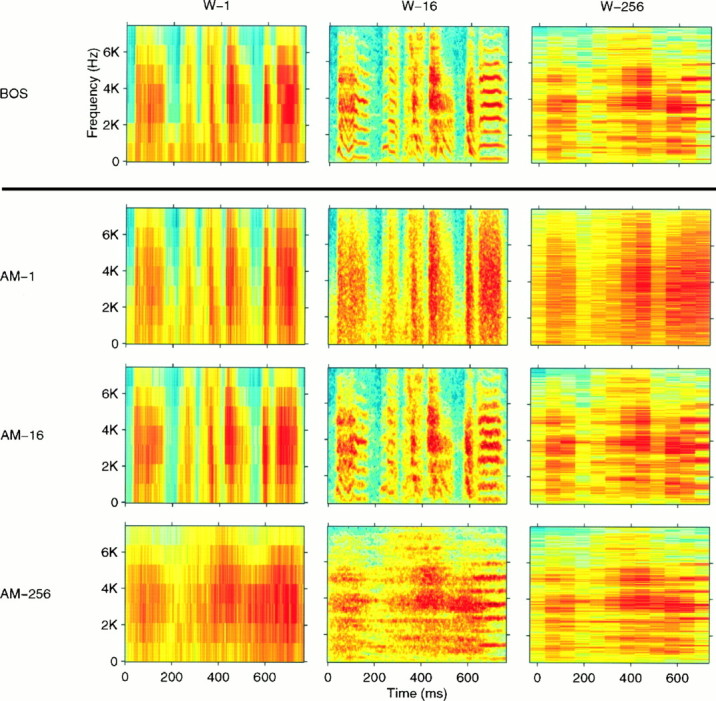Fig. 2.

Wideband (W-1), middleband (W-16), and narrowband (W-256) spectrograms generated with different time windows for a representative section of a zebra finch song motif (BOS) and three synthetic AM songs derived from that particular song (AM-1, AM-16, andAM-256). The time windows used to generate the spectrograms had a Gaussian shape and a width of 1, 16, or 256 msec, respectively. The three AM songs were generated by preserving the AM waveforms of the frequency decomposition of the original BOS obtained with a bank of Gaussian-shaped frequency filters, as explained in Materials and Methods. The filters also had widths of 1, 16, or 256 msec expressed in the time domain (1 kHz, 62.5 Hz, or 3.9 Hz, respectively, in the frequency domain). Therefore, theW-1 (W-16 andW-256) spectrogram for the AM-1(AM-16 and AM-256) song approximately matches the W-1 (W-16 andW-256, respectively) spectrogram for theBOS. At other time–frequency scales, the spectrograms of the AM songs do not match that of the BOS, illustrating the information that is lost in the AM songs. TheAM-1 song preserves the fine temporal modulations but does not have the frequency resolution of the BOS. TheAM-256 has good frequency discrimination calculated at longer time scales (notice the finer frequency bands for the last harmonic stack in the song) but has smeared the temporal structure present in the BOS. The AM-16 shows good time–frequency compromise.
